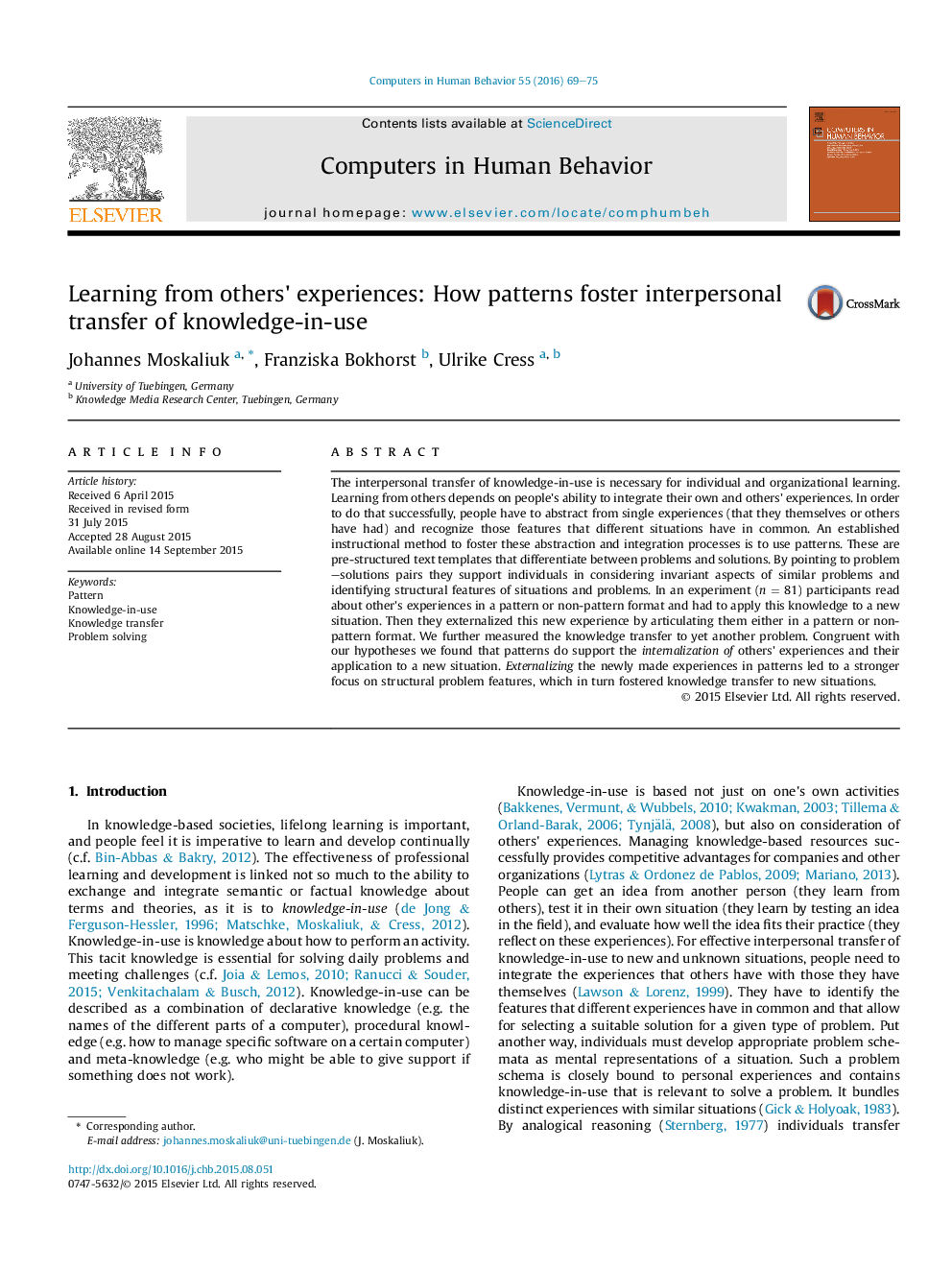| Article ID | Journal | Published Year | Pages | File Type |
|---|---|---|---|---|
| 350153 | Computers in Human Behavior | 2016 | 7 Pages |
•Learning from others depends on the ability to integrate own and others' experiences.•One instructional method to foster abstraction and integration processes are patterns.•Patterns highlight invariant aspects and structural features of situations and problems.•Patterns support the internalization of others' experiences and the application to new situations.
The interpersonal transfer of knowledge-in-use is necessary for individual and organizational learning. Learning from others depends on people's ability to integrate their own and others' experiences. In order to do that successfully, people have to abstract from single experiences (that they themselves or others have had) and recognize those features that different situations have in common. An established instructional method to foster these abstraction and integration processes is to use patterns. These are pre-structured text templates that differentiate between problems and solutions. By pointing to problem–solutions pairs they support individuals in considering invariant aspects of similar problems and identifying structural features of situations and problems. In an experiment (n = 81) participants read about other's experiences in a pattern or non-pattern format and had to apply this knowledge to a new situation. Then they externalized this new experience by articulating them either in a pattern or non-pattern format. We further measured the knowledge transfer to yet another problem. Congruent with our hypotheses we found that patterns do support the internalization of others' experiences and their application to a new situation. Externalizing the newly made experiences in patterns led to a stronger focus on structural problem features, which in turn fostered knowledge transfer to new situations.
